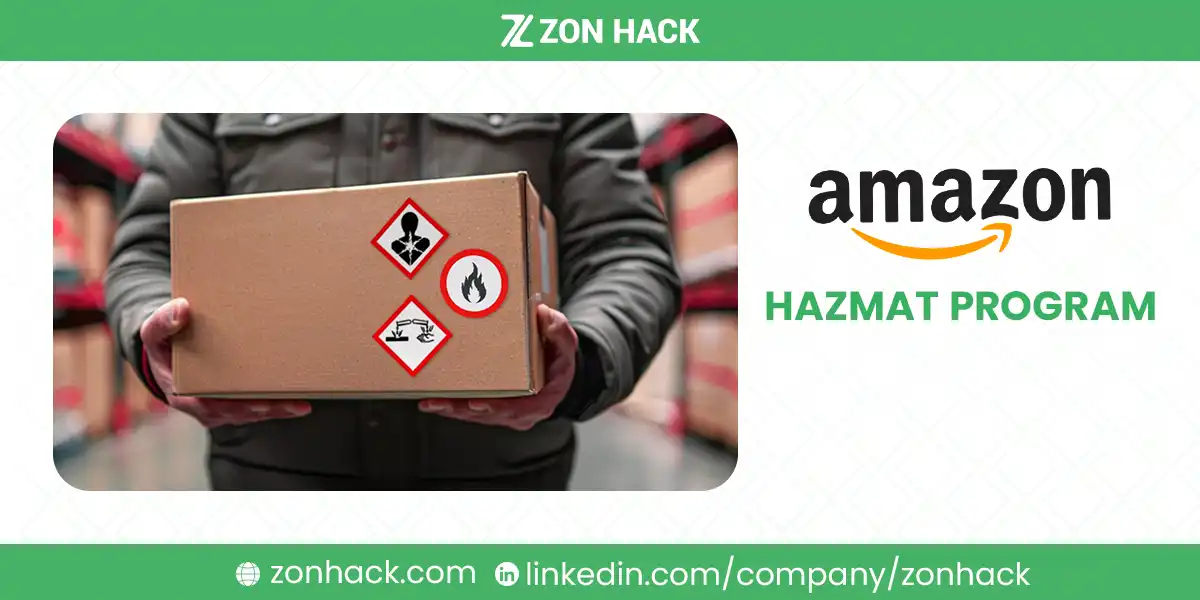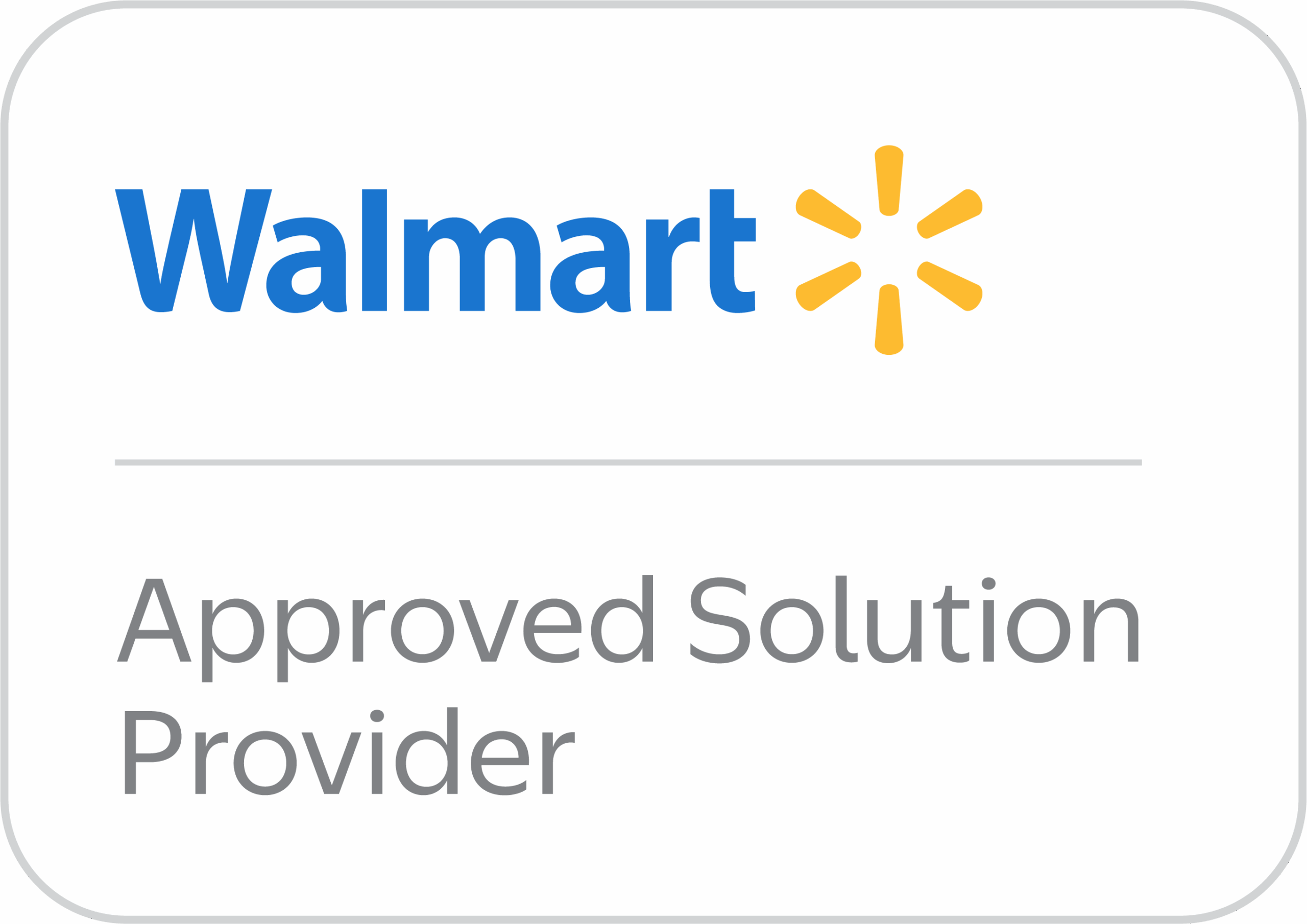Amazon’s Hazmat program allows sellers to ship hazardous materials (hazmat) to customers via the Fulfillment by Amazon (FBA) service, provided they meet specific criteria and follow strict guidelines. These materials include items like batteries, cleaning products, aerosols, and other substances classified as dangerous. To sell such products through Amazon, you need to apply for the Hazmat program and complete the necessary documentation for compliance with safety regulations.
Successfully applying for Amazon’s Hazmat program can increase your product offerings while ensuring that you adhere to all safety and legal guidelines.
What Is the Amazon Hazmat Program?
The Amazon Hazmat Program is designed to allow sellers to ship and store products that are classified as hazardous materials through Amazon’s Fulfillment by Amazon (FBA) system. Hazardous materials, also known as dangerous goods (DG), are items or substances that could pose a risk to health, safety, property, or the environment during transportation or storage.
These include:
- Flammable liquids (e.g., certain cleaning agents, nail polish removers)
- Aerosols (e.g., spray paints, deodorants)
- Batteries (especially lithium-ion batteries found in electronics)
- Corrosive materials (e.g., some cleaning chemicals)
To sell these items, sellers must ensure compliance with Amazon’s Dangerous Goods Policy. This means that products must meet the packaging, labeling, and documentation requirements mandated by the U.S. Department of Transportation (DOT), the International Air Transport Association (IATA), and Amazon’s internal rules. Only after enrolling in the Hazmat program can a seller be eligible to store and ship such items through Amazon’s FBA network.
Why Should You Apply for the Hazmat Program?
Applying for the Hazmat program enables you to sell a broader range of products, giving you a competitive advantage in categories where hazardous materials are prevalent, such as electronics, automotive products, or cosmetics.
Key reasons for enrolling in the Amazon Hazmat program include:
- Expanding Your Product Range: Many high-demand items such as batteries, flammable cosmetics, or cleaning agents fall under the hazardous materials category. Gaining approval to sell these opens up new revenue streams.
- Leveraging FBA Services: By using FBA for hazardous materials, you benefit from Amazon’s reliable and fast shipping network, which helps you reach a larger customer base.
- Maintaining Compliance: Amazon’s Hazmat program helps ensure that your products meet all necessary safety and legal requirements, protecting your business from potential penalties.
How to Check If A Product Needs Hazmat Certification?
Checking if your product needs hazmat permission is really easy. Here’s a step-by-step guide to do that:
- First log in to your Amazon Seller Central.
- Then search for “dangerous goods” and then click on “Check whether your product is hazardous”
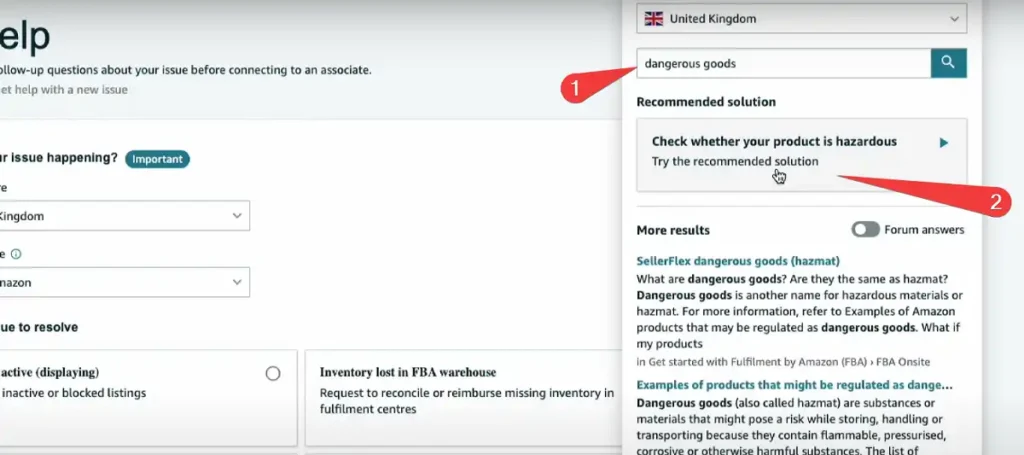
- On the next menu, click on Look up an ASIN
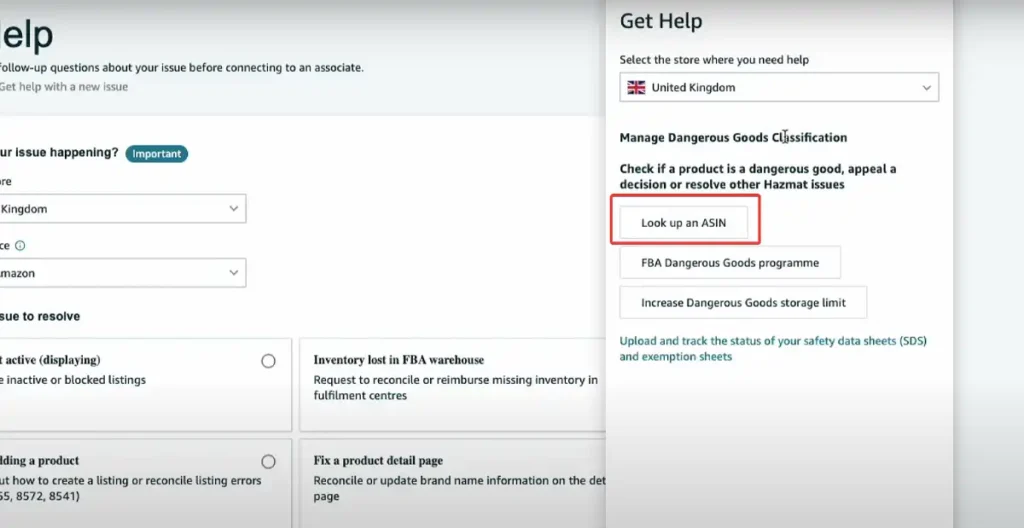
- Then type your product ASIN and it will tell you whether you need to apply for hazmat program or not.
Next, we’ll discuss how to apply for the Hazmat program.
How to Apply for Amazon’s Hazmat Program?
Step 1: Verify Your Product Eligibility
The first step is to determine whether your products are classified as hazardous materials. Amazon provides a list of restricted items, and you should review it to ensure your product is eligible for FBA. Common restricted materials include fireworks, pesticides, and certain chemicals. Or you can simply check the product ASIN as we’ve described above.
Step 2: Apply for Dangerous Goods Program
To apply for the dangerous goods program, simply look up dangerous goods in Seller Center and click on “FBA Dangerous Goods Program”
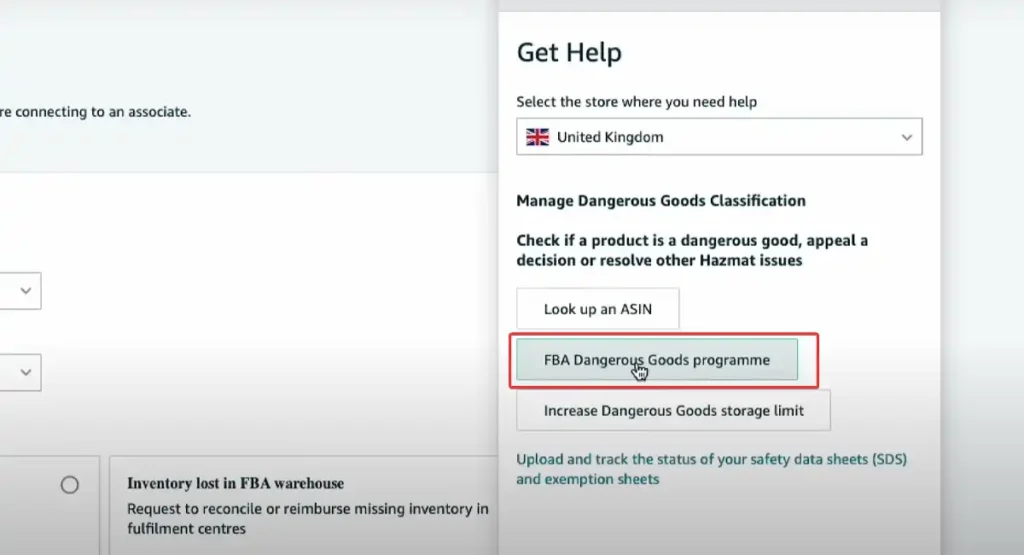
Next, click on “Apply to the FBA Dangerous Goods Program”.
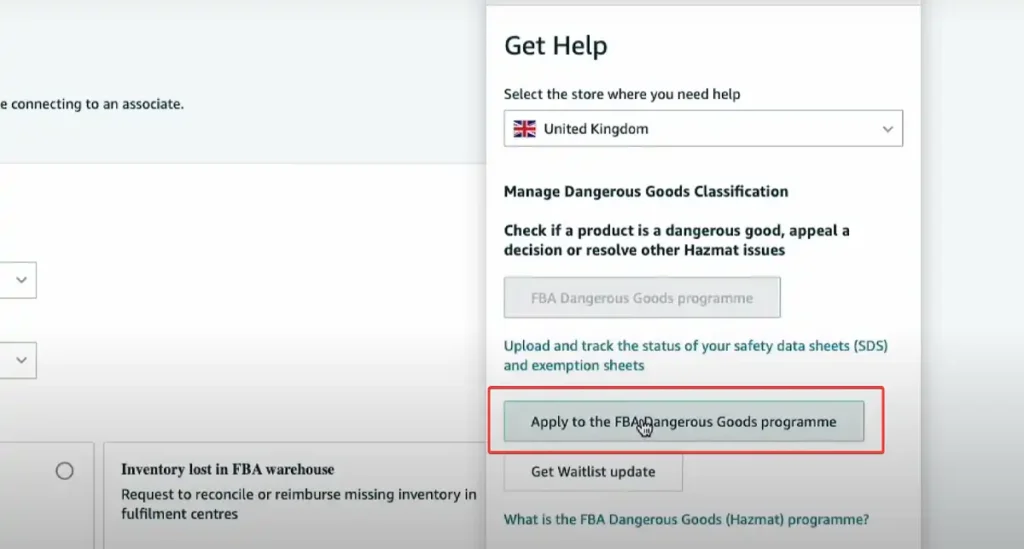
Depending on your product type, it might take a few days for Amazon to review your application. Once they have reviewed your request and approved you for the Hazmat Program, you are good to go.
What Are the Packaging and Labeling Requirements for Hazmat Products?
To ensure safe transportation and storage, Amazon requires that all hazardous materials follow specific packaging and labeling guidelines. These include:
- Proper Packaging: Your products must be securely packaged to prevent leaks, spills, or any potential exposure during transit.
- Labeling: Each package must carry clear hazard labels, indicating the type of hazardous material (e.g., “Flammable” or “Corrosive”).
- Markings: Each package must be marked according to IATA and DOT guidelines, including specific codes and symbols that identify the material.
Failure to comply with these requirements may result in the rejection of your shipment or removal from Amazon’s Hazmat program.
FAQs about Applying for Amazon’s Hazmat Program
How long does the application process take?
It typically takes 7-14 days for Amazon to review and approve your products for the Hazmat program, depending on the accuracy of your submission and the documentation provided.
What happens if my product is rejected?
If your product is rejected, Amazon will provide feedback, and you may resubmit with corrections or additional documentation.
Can all products with hazardous materials be sold through FBA?
No, not all products are eligible. Items like explosives, strong acids, and certain chemicals are not allowed through FBA, even with Hazmat approval.
By following the proper application steps and ensuring compliance with Amazon’s rules and regulations, you can successfully join the Amazon Hazmat Program. This enables you to sell a broader range of products and leverage the full power of Amazon’s FBA network for fast shipping and storage while maintaining safety and legal compliance.

